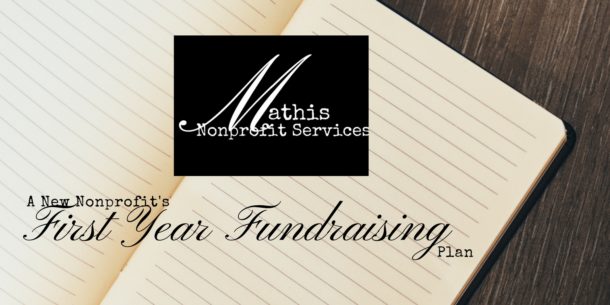You’ve done all the fundraising things you know to do- events, grants, asking, sponsorships, and on and on. But you aren’t gaining traction. Are you missing something?
I’ve been there too. I came from real estate to the nonprofit world and I didn’t have a clue. It wasn’t until I landed in a Development Department that I was taught how to think like a fundraiser.
It changed my outlook and actions when it came to fundraising.
And it brought in more money!
I’ve learned that not thinking like a fundraiser keeps you stuck doing things that don’t raise the kind of money you need and it burns you out. You are always on the fundraising hamster wheel. It is also a disservice to your donors and your organization. Disrespecting donors happens when you don’t think like a fundraiser. And disrespected donors mean donors quit giving and it becomes harder to get new donors in. The organization can lose hundreds of thousands of dollars which translates into not being able to serve the people you want to serve. Let’s face it, that is the whole reason you fundraise in the first place- the difference you know your program makes in people’s lives.
Professional Fundraisers think in terms of the Nonprofit Fundraising Framework- Know Your Donors, Know Your Strategy, and Know Your Numbers. Here are four ways you can begin to think like a fundraiser.
Know Your Donors
1. Donors are your first priority.
Building your donor list and taking care of donors is your most important job. Donors should be seen as partners and not ATM machines. Organizations that treat their donors as partners communicate regularly with thank yous. They are accountable to their partner by communicating what they are doing with their funding and how it’s impacting lives. They respect their partner by asking for opinions and feedback through phone conversations, emails, and surveys. Last, organizations take the time to learn their ideal donor in order to communicate effectively, save money, and actually raise more money.
Know Your Strategy
2. Look for ways to diversify funds.
Using one fundraising strategy to fund your mission will ultimately limit your ability to raise funds. Becoming dependent on One Source income sets you up for catastrophic consequences. The recent COVID-19 situation is a great example. If your organization relied on events to fund your mission, you were completely left scrambling and losing sleep over where your funding was coming from. The same was true if you relied on grants. When COVID-19 became a crisis, many foundations switched their area of focus to help organizations that address COVID-19 relief. There were many organizations that didn’t directly relate to the crisis and were left without anticipated funding. Diversified funding means having a fundraising plan where you have multiple income streams. My rule of thumb is that one source of funding should never ever be more than one-third of your operating budget. The reason is that if you lost one-third of your budget for one income stream, you could still pivot your direction, make up the funding in another area, and cut expenses. It would still mean making hard decisions but the organization would survive.
Know Your Numbers
3. Know Your Cost Per Unit of Service.
What is the Cost per Unit of Service? The Cost per Unit of Service is the amount of money needed to sustain an organization or a program. Some refer to it as the cost of running the organization or program. The Cost per Unit of Service is often referred to in cost per day, per person, or some other smaller measurement. Cost per Unit of Service includes salaries, supplies, and anything else that is needed to deliver services. This is how you fund salaries! When Fundraisers ask for money, it is very powerful to say your donation of $25 will provide one family a place to be safe and not homeless for one day. Can you see how someone might say, “I can easily give $25 to help?” Can you see where someone might say, “I can give $175 and keep them feeling safe and not homeless for a week?”
4. Measure, measure, measure.
Fundraisers know that everything you do has to move the organizational goals forward. If it doesn’t, it’s just busy work. And no one has time for that! How do we know we are impacting the organizational goals? We measure, measure, and measure some more. We understand that by measuring our progress towards goals, we know if what we are doing is working or something needs to be tweaked.
Fundraisers also know when to ask for help and seek out how to do things. It’s why I’ve created a membership, Nonprofit Nation, that will help you with the step-by-step of how to fundraise. You can join the Facebook group Nonprofit Nation’s Fundraising Success Path here and be the first to know when the membership opens.


 Most nonprofit leaders lay awake at night trying to figure out how to fund their mission.
Hi! I'm Alesha.
I teach sustainable fundraising in a way that they can take action today so they can serve their clients.
I can help you move from just getting started funding your new nonprofit to gaining confidence in your fundraising and building relationships to knowing what works for your organization and looking at the infinite game when it comes to funding. I’ve worked with nonprofit Founders and written the book I HAVE MY 501(C)3! NOW WHAT?!? Your Blueprint to Starting Your Nonprofit Without Being the Sole Funder that lays the foundations for funding in a new nonprofit.
I’ve worked in Development (Fundraising) Departments in large organizations and I know the no cost, low-cost methods they use to bring in funding. I bring those sound strategies to the nonprofits I serve.
Most nonprofit leaders lay awake at night trying to figure out how to fund their mission.
Hi! I'm Alesha.
I teach sustainable fundraising in a way that they can take action today so they can serve their clients.
I can help you move from just getting started funding your new nonprofit to gaining confidence in your fundraising and building relationships to knowing what works for your organization and looking at the infinite game when it comes to funding. I’ve worked with nonprofit Founders and written the book I HAVE MY 501(C)3! NOW WHAT?!? Your Blueprint to Starting Your Nonprofit Without Being the Sole Funder that lays the foundations for funding in a new nonprofit.
I’ve worked in Development (Fundraising) Departments in large organizations and I know the no cost, low-cost methods they use to bring in funding. I bring those sound strategies to the nonprofits I serve.